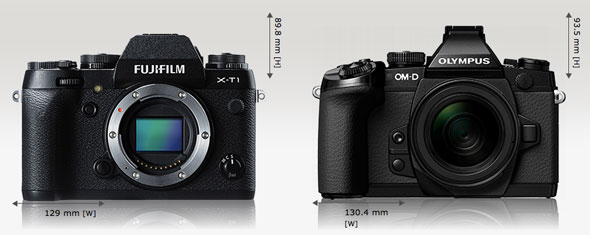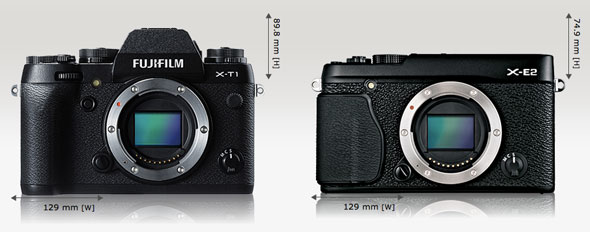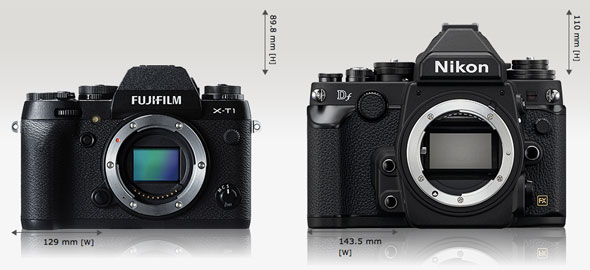Don’t get me wrong, am an admirer and fervent user of these compact new system cameras that are technological proof of Moore’s law, the law that says the number of transistors on integrated circuits doubles approximately every two years in a computer. And with cameras becoming, in fact, more and more computerized, one of the most noticeable effects of Moore’s law are faster, more powerful and, of course, smaller cameras. But it’s high time that camera makers rethink the miniaturization trend. It’s getting difficult to properly hold those things! Instead of shrinking those bodies even more, dear camera makers give us a reasonable size and cram useful stuff into it, such as extended battery life, more processing power and, of course, better grip.
Our society’s slimming craze doesn’t stop at camera design. Just picked up a Fujifilm X-T1. Marvel of a camera. Fast, well built, with the dials and controls one needs. The camera’s a lightweight and size-wise, well, borderline. Perfect, if you ask me. But once cameras get even smaller they definitely become toys.
With the X-T1 Fujifilm clearly aims at the Olympus OM-D E-M1‘s style and size. The former Fujifilm X lineup with classic linear shapes was more Leica-like. Not that the X-T1 is an E-M1 clone, but its latest X camera is even slightly larger than the X-E2, Fujifilm’s former flagship:


Looks like it has finally dawned on camera makers that too much compactness isn’t the strategy to pursue. Not that I have big hands, they’re actually smaller than my 15-year-old son’s. But a camera needs a certain size and weight to be comfortable to work with. Now don’t call me the devil’s advocate for the sake of this short rant’s argument. But yes, the enviously laughed off Nikon Df, that’s a size and weight I can peacefully live with:

The Nikon looks like a monster beside the Fujifilm. Things aren’t always what they seem — which in fact is one of the reasons why DSLRs still hold their ground. Mirrorless, compactness and innovation, that’s all well and good, but DSLR have their size and form factor for a reason.
Moore’s law would allow for even smaller cameras with the nearly power of a DSLR under the hood. As the megapixels race has come to a halt, thank goodness so does the miniaturization race.
Or does it?
Here’s DigitalRev‘s unmistakable Kai look at the Sony A7 and Canon 5D Mark III and ponder whether full-frame mirrorless, with the Sony A7 and A7R, is making full-frame DSLRs pointless:
These days most cameras are decent performers. In the end the question whether you should buy a full-frame mirrorless or DSLR is a lot about size. The 5D has lots of it. Mirrorless competitors, on the other hand, could benefit from gaining a bit in size and weight. Don’t you want to “feel” the camera?


